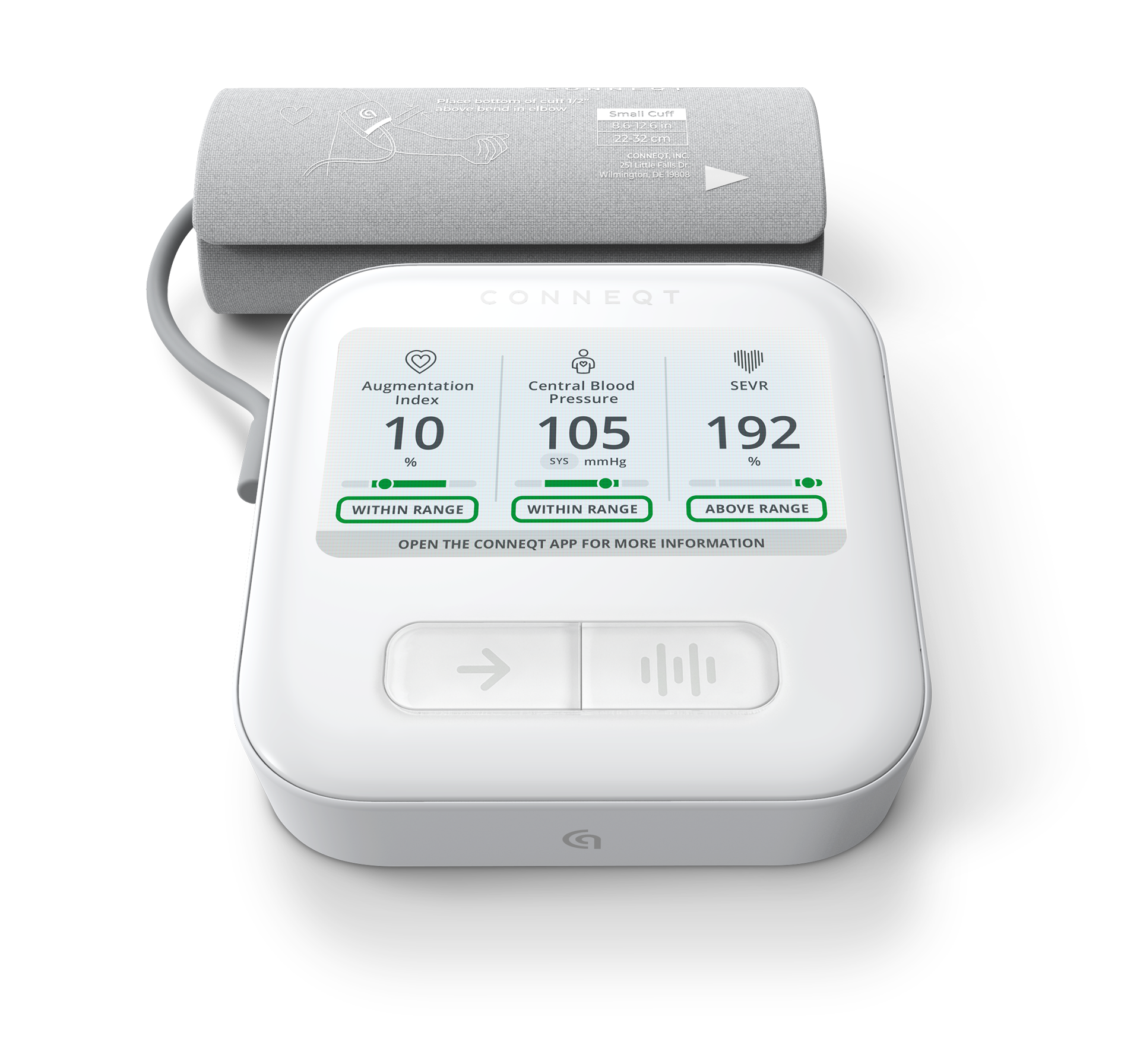In longevity, differentiation—the edge that comes from tracking what others overlook—starts with what most people still don’t measure. It’s the difference between chasing trends and finding the signal that actually changes outcomes.
From biological age clocks to recovery rings, we’ve modernized nearly every health input. But one foundational system still goes largely unmeasured despite being responsible for 1 in 3 deaths worldwide: your arteries.

Measure what matters
Save 20% on checkout with code VITALITY
Arterial health isn’t just about avoiding disease. It’s a window into how your body is coping right now and how resilient it will stay as you age.
These aren’t symptoms. They’re signals—often years before anything shows up in a lab.
If you’re optimizing everything else but skipping this, your longevity stack may be missing its core.
We’ve outgrown peeing on strips to check blood sugar—so why are we still relying on century-old methods to assess our arteries?
Most Longevity Metrics Start Too Late
Most wearables track what happened after your body has already been pushed out of balance.
HRV, sleep scores, glucose—they’re reactive. They change when your system is under strain. But they rarely tell you why.
As Cornell Tech professor Tanzeem Choudhury noted, wearables often capture the outputs—data without context or direction.
Tools like CONNEQT Pulse flip that. By measuring central blood pressure and arterial waveforms, it reveals hidden cardiovascular strain—before it turns into symptoms or a diagnosis.
It’s the difference between feedback and foresight.
Central Blood Pressure: What Arm Cuffs Miss
The pressure in your arm isn’t the same as the pressure your heart and brain actually feel.
In a large long-term study, people with high central blood pressure—specifically, pressure measured near the heart—had a 69% higher risk of heart attack, stroke, or other cardiovascular problems, even if their arm-cuff readings looked normal.
Another study of over 5,500 people found the same pattern: central blood pressure was a better predictor of future events, while high arm pressure alone didn’t raise risk.
This is next-level insight—not just another version of the same old vitals.
AP and AIx: Signals of Stress Before It Gets Serious
As arteries stiffen, pressure waves reflect sooner and harder. That reflection amplifies central blood pressure—and often goes unnoticed.
Two key markers capture this: augmentation pressure (AP) and augmentation index (AIx).
In patients with coronary artery disease, a 10 mmHg rise in AP raised cardiac event risk by 20%. A 10% increase in AIx increased risk by 28%.
These values tend to shift before blood pressure or cholesterol—and they respond to lifestyle, sleep, and stress.
That makes them not just predictive, but actionable.
SEVR: The Oxygen Mismatch You Can’t Feel
SEVR (Subendocardial Viability Ratio) measures whether your heart’s oxygen supply keeps up with its workload—especially in the subendocardium, the layer most vulnerable to low flow.
A low SEVR can signal early ischemia: a mismatch between oxygen demand and delivery, even when other metrics look fine.
Across multiple clinical populations, SEVR has been linked to a higher risk of ischemia, cardiac events, and mortality. It’s one of the clearest early signals of cardiovascular strain—yet still rarely tracked.
Arterial Stiffness Isn’t Just a Symptom—It’s a Signal
Stiff arteries don’t just result from high blood pressure. They often precede it.
In large cohort studies like ARIC and the Baltimore Longitudinal Study of Aging, elevated AP and AIx predicted hypertension years before diagnosis.
And in a long-term study tracking over 7,000 adults for 15 years, those with stiffer arteries, but normal blood pressure, were far more likely to develop hypertension within just a few years.
That makes arterial stiffness not just a marker of aging, but a driver of it.
Biological Age Is a Headline. Arterial Age Is a Forecast.
Biological age scores can be motivating. But they often fail to predict clinical outcomes.
You can have youthful telomeres or a low methylation age and still carry central blood pressure that quietly increases cardiovascular risk.
No one brags about a low biological age after a heart attack.
By contrast, arterial metrics show how your system is functioning under pressure and whether your interventions are working.
A More Intelligent Way to Track What’s Next
Most health metrics tell you how yesterday went. Arterial health helps forecast what’s ahead.
CONNEQT Pulse tracks trends across central blood pressure, AP, AIx, and SEVR.
It connects the dots into a report you can act on—whether you’re training harder, managing stress, or thinking long-term.
You don’t just get another number. You get a roadmap.
Longevity Starts Where Risk Begins
You’ve dialed in your macros. You track your recovery. You optimize for glucose, sleep, and inflammation.
But if your arteries are under silent pressure, you’re still flying blind.
This isn’t about perfection. It’s about awareness—because what you measure, you can change.
And in longevity, this is where change begins.






